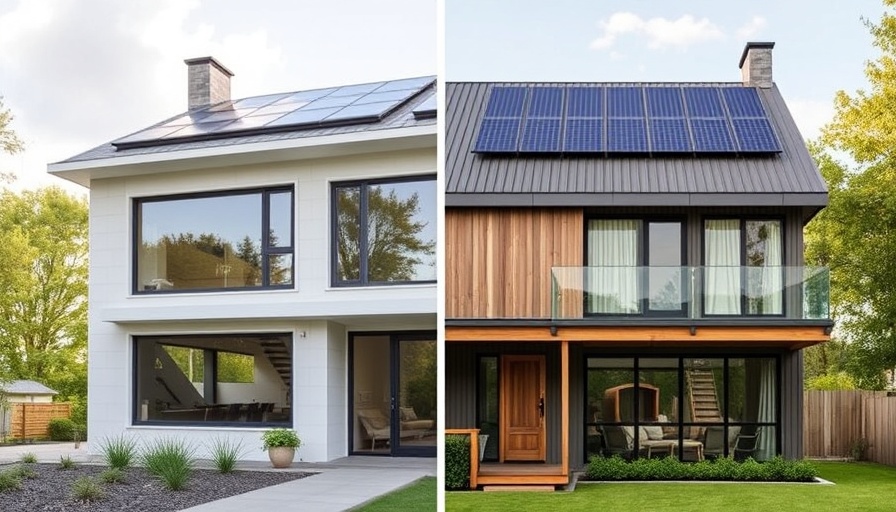
Understanding Net Zero Energy Homes and Passive Houses
In recent years, discussions around green building have brought net zero energy homes and passive houses into the spotlight. While both aims to significantly reduce energy consumption, understanding their fundamental differences is critical for homeowners and builders alike. Net zero energy homes generate as much energy as they consume, resulting in a neutral energy balance. On the other hand, passive houses focus on minimizing energy needs through superior construction and design principles.
The Importance of Energy Efficiency
Energy efficiency stands at the core of both net zero and passive homes. They aim to provide sustainable living solutions while minimizing environmental impact. A passive house leans on strict building standards to ensure energy loss is minimized, which results in little need for additional energy generation. These design features include better insulation, high-performance windows, and an airtight building envelope.
Common Ground: What They Share
Both net zero and passive homes share a commitment to sustainability, striving to lower their overall energy consumption and greenhouse gas emissions. They typically feature high levels of insulation, energy-efficient appliances, and use renewable energy sources such as solar panels. This focus not only benefits the environment but also lowers energy bills, attracting homeowners looking for financial savings along with ecological benefits.
Differences that Matter: A Deeper Dive
At the heart of the comparison is how each type of home approaches energy efficiency. Net zero energy homes often require significant integration of renewable technologies, like solar panels, to balance out energy usage. In contrast, passive houses meticulously manage energy consumption through design without primarily relying on external energy generation. This nuanced approach may lead one to prefer passive homes for their advanced architectural efficiency.
Future Trends and Considerations
With an increasing emphasis on sustainability, the market for both net zero and passive homes is expected to grow. As governments worldwide prioritize green initiatives, these homes are becoming more mainstream. Builders may have to consider which approach best fits the local climate, available technology, and homeowner needs to foster energy-efficient living in diverse environments.
Making Informed Decisions
Choosing between a net zero energy home and a passive house depends on various factors including budget, location, and long-term energy goals. It’s essential to consider not just current energy efficiency but also the future of energy demands and sustainability. Both options have unique benefits and drawbacks, but understanding these factors can empower prospective homeowners to make the best choice for their circumstances.
 Add Row
Add Row  Add
Add 




Write A Comment